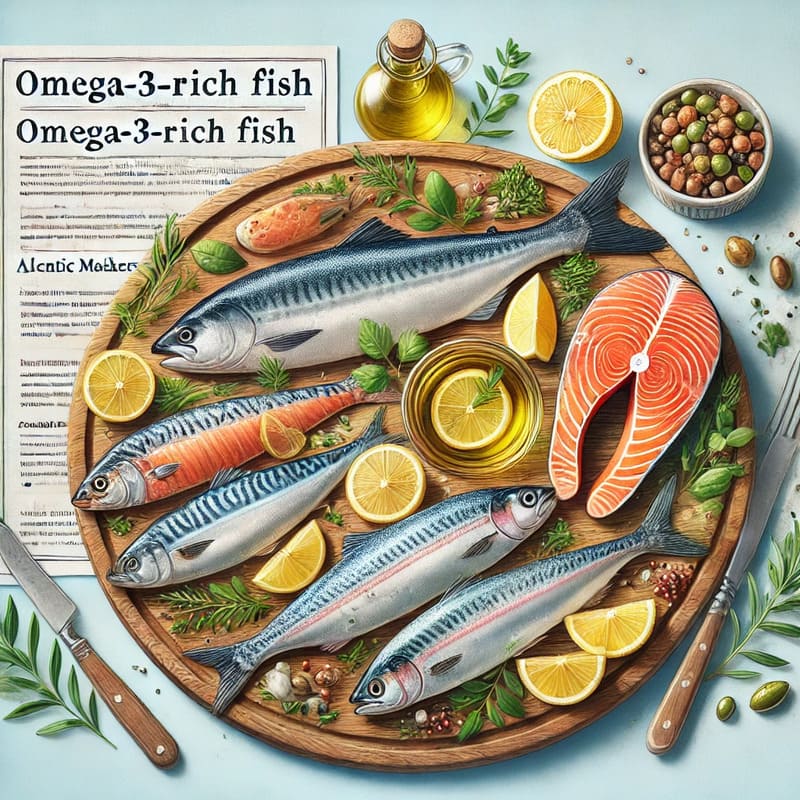
Chamberlains of London – Fish has long been celebrated as a nutrient-packed food that promotes good health. Rich in high-quality protein, essential vitamins, and omega-3 fatty acids, it’s often hailed as a superfood for heart and brain health. However, not all fish are created equal. Some offer incredible health benefits, while others carry risks due to contaminants like mercury and harmful farming practices. Understanding which fish to include and which to limit in your diet is key to maximizing benefits while minimizing risks.
1. Salmon: One of the most nutrient-dense fish, wild-caught salmon is a powerhouse of omega-3 fatty acids, which are vital for heart health and reducing inflammation. It’s also rich in vitamin D, which supports bone health, and selenium, a mineral that helps fight oxidative stress. Farmed salmon, while still beneficial, may contain higher levels of pollutants, so wild salmon is often the preferred choice.
2. Sardines: These small, oily fish are an excellent source of omega-3s, calcium, and vitamin B12. Because they’re low on the food chain, sardines accumulate less mercury, making them a safer option for frequent consumption. They are particularly popular among health enthusiasts for their affordability and nutrient density.
3. Atlantic Mackerel: Rich in omega-3s, vitamin D, and vitamin B12, Atlantic mackerel is another highly recommended option. However, caution is needed to differentiate it from king mackerel, which has significantly higher mercury levels.
4. Rainbow Trout: Farm-raised in clean environments, rainbow trout is a sustainable and healthy choice. It’s packed with omega-3s and has a mild flavor, making it a versatile option for various dishes.
“Also Read: Sakana Dream Unveils Revolutionary Farmed Japanese Jack Mackerel “Yumeaji”
1. Tuna: While tuna is a good source of protein and omega-3s, its mercury content can be a concern, particularly for pregnant women and children. Albacore and bigeye tuna are known to have higher mercury levels, so it’s best to limit their consumption and opt for skipjack tuna instead.
2. Tilapia: Though widely consumed, tilapia is low in omega-3s and high in omega-6 fatty acids, which can contribute to inflammation if consumed excessively. It’s a popular choice due to its mild flavor and low cost but lacks the nutritional benefits of other fish.
3. Swordfish: This large predator fish is notorious for its high mercury levels. Consuming swordfish regularly can lead to mercury accumulation, which may harm the nervous system over time.
4. Shark: Shark meat carries some of the highest mercury concentrations among fish. Health experts strongly recommend avoiding it, especially for children and pregnant women.
While choosing the right fish is essential, how you prepare it also matters. Baking, grilling, or steaming fish helps preserve its natural nutrients without adding unhealthy fats. Avoid frying, which can increase calorie content and diminish the health benefits of omega-3s. Pairing fish with nutrient-dense sides like leafy greens or quinoa can further enhance its nutritional value.
Herbs and spices like dill, parsley, and garlic not only add flavor but also provide additional antioxidants and anti-inflammatory properties. Simple marinades with olive oil, lemon, and herbs can elevate the taste while keeping the meal healthy.
By combining smart purchasing decisions with mindful preparation, you can make fish a delicious and health-boosting part of your diet.